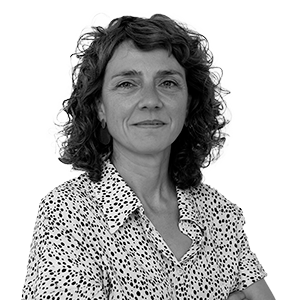They discover why the same mutation can cause such different leukemias
Researchers at IRB Barcelona have identified how the same alteration in an oncogene can cause very different disease outcomes


BarcelonaIn many cancers, it often happens that patients with the same mutation develop differently and do not respond equally to treatments. For a long time, there was speculation that the reason for these differences could be genetic or, for example, related to the age of the patient. However, none of these arguments could explain by itself the diversity of responses of patients to an identical alteration in a specific oncogene – a gene that has undergone a mutation and that has the potential to cause cancer.
Now, researchers at the Institute for Research in Biomedicine of Barcelona (IRB) have solved this mystery, at least as regards a very aggressive type of leukaemia, the myeloid ones. Led by Icrea researcher Alejo Rodríguez-Fraticelli, the team has discovered that the progression of the disease directly depends on the exact cell that receives the mutation, both the cell type and its previous "life history".
This finding, that the magazine collects Cell Stem Cell, It represents a step forward in better understanding the variability between patients suffering from these blood tumors – and potentially other types of cancer – and paves the way for finding even more personalized treatments that improve the prognosis of the disease.
"More sensitive" stem cells
Myeloid leukaemias are the most prevalent type of leukaemia in the adult population in Spain, where 6,000 new cases are diagnosed each year. They are very aggressive and have a very negative prognosis with low survival rates. Until now, these patients have undergone genetic testing to identify the mutations they have and try to administer the most appropriate treatments. However, patients with the same mutation show completely different responses to therapy.
In a study carried out with genetically identical mice that acquired the same mutation, researchers at IRB Barcelona have seen that "one of the possible sources that explain the differences in the evolution of the disease is the stem cell where the mutation process begins and which ends up giving rise to the tumour", identical.
In the same way that if we look at the hand it is easy to see that the skin - and, therefore, the cells that form it - is different on the palm, on the back, in the nails and in the knuckles, despite being all epithelial, the same thing happens in the bone marrow, Rodrí explains to ARA. It is there where the different groups of stem cells are that are responsible for generating blood cells, such as red and white blood cells. These stem cells are exposed to various sources of cellular damage, such as infections or ageing itself, which modify them.
The researchers have seen that some of these cells are different from those of the stem cells, which are responsible for generating blood cells, such as red and white blood cells. Stem cells are more sensitive than others to suffer these damages and to respond more to a proinflammatory stimulus. For Rodrígiuez-Fraticelli, "the pre-existing inflammation conditions in the mutations predispose the blood stem cells so that, once mutated, they acquire very aggressive properties."
Extensible to other tumors
A technology they developed, called STRACK, was crucial to making this discovery. It allowed them to trace the life of the cell before and after it suffered the mutation. This allowed them to link the initial state of the cell, before the genetic alteration occurred, with the characteristics of the tumor afterwards.
The researchers think that this discovery could be applicable to other types of tumour, such as pancreatic cancer, in which there are also groups of patients with the same mutation that respond very well or very poorly to a treatment, without there being any genetic explanation.
The next step now will be to look for specific therapies for each of the subgroups that will allow the progression of the disease to be halted, "to further personalise personalised oncology", highlights Rodríguez-Fraticelli. That is why they have begun to look for drugs that are already approved or in the process of approval so that it is "as quick as possible to classify patients and assign them the best therapeutic modality".
The researchers, who have received financial support from the CRIS Foundation against cancer, and also from the European Research Council, hope to establish alliances with hospitals to carry out clinical trials in the future.
